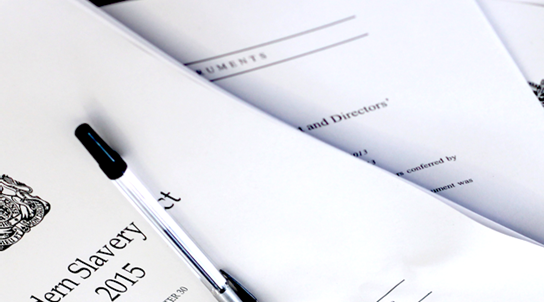
The UK Home Office has released an updated version of its guidance for companies on the content of statements published under the Modern Slavery Act 2015. The guidance was initially published in 2015 when the Bill first passed.
Now that organisations have gone through a first round of Modern Slavery statements (and some have already published a second report), the guidance has been revised to include a slightly firmer approach.
In terms of content, the previous guidance stated that companies ‘may’ include the suggested items set out in the Act (structure, policies, due diligence processes etc), whereas the Home Office now states that organisations ‘should aim to’ include the said content. The list of contents may indeed become mandatory in the future if the Modern Slavery (Transparency in Supply Chains) Bill [HL] 2017-19, which had its first reading in July 2017, passes.
While there are no plans for the government to monitor Modern Slavery reports, the updated guidance reminds companies that they are under external scrutiny: ‘Organisations should be aware that their statement will be assessed by the public, investors, the media and other external parties. They will expect to see year-on-year improvements outlining practical progress on how they are tackling the risks and incidence of modern slavery in their operations and supply chains.’
The new Home Office guidance also includes some additions in relation to how organisations should update their statements:
- Firstly, the guidance has a more definitive language advising organisations to publish statements within six months of the organisation’s financial year end.
- The guidance also suggests that organisations should keep statements from previous years available online even when new statements are published, in order to allow for comparison and progress year on year.
- It further encourages organisations to continue to publish a MSA statement even if their turnover falls under the £36million turnover threshold for a particular financial year, in order to demonstrate to the public and investors the importance of transparency to the organisation.
The guidance now includes a few paragraphs defining Child Labour and Worst Forms of Child Labour following ILO conventions, clarifying that child labour does not necessarily constitute modern slavery. Instead, the guidance suggests that a case-by-case analysis needs to be conducted to determine whether an instance of child labour refers to exploitation amounting to ‘slavery, servitude and forced or compulsory labour or human trafficking’.
Last but not least, the guidance now includes our report on Modern Slavery statements – One Year On as a useful resource. We analysed over 150 statements published in March 2017 in terms of the quality and detail of their reporting. In the report, we call out several examples of good practice which can be useful for businesses that are in the process of writing their own statements. You can read our report here.